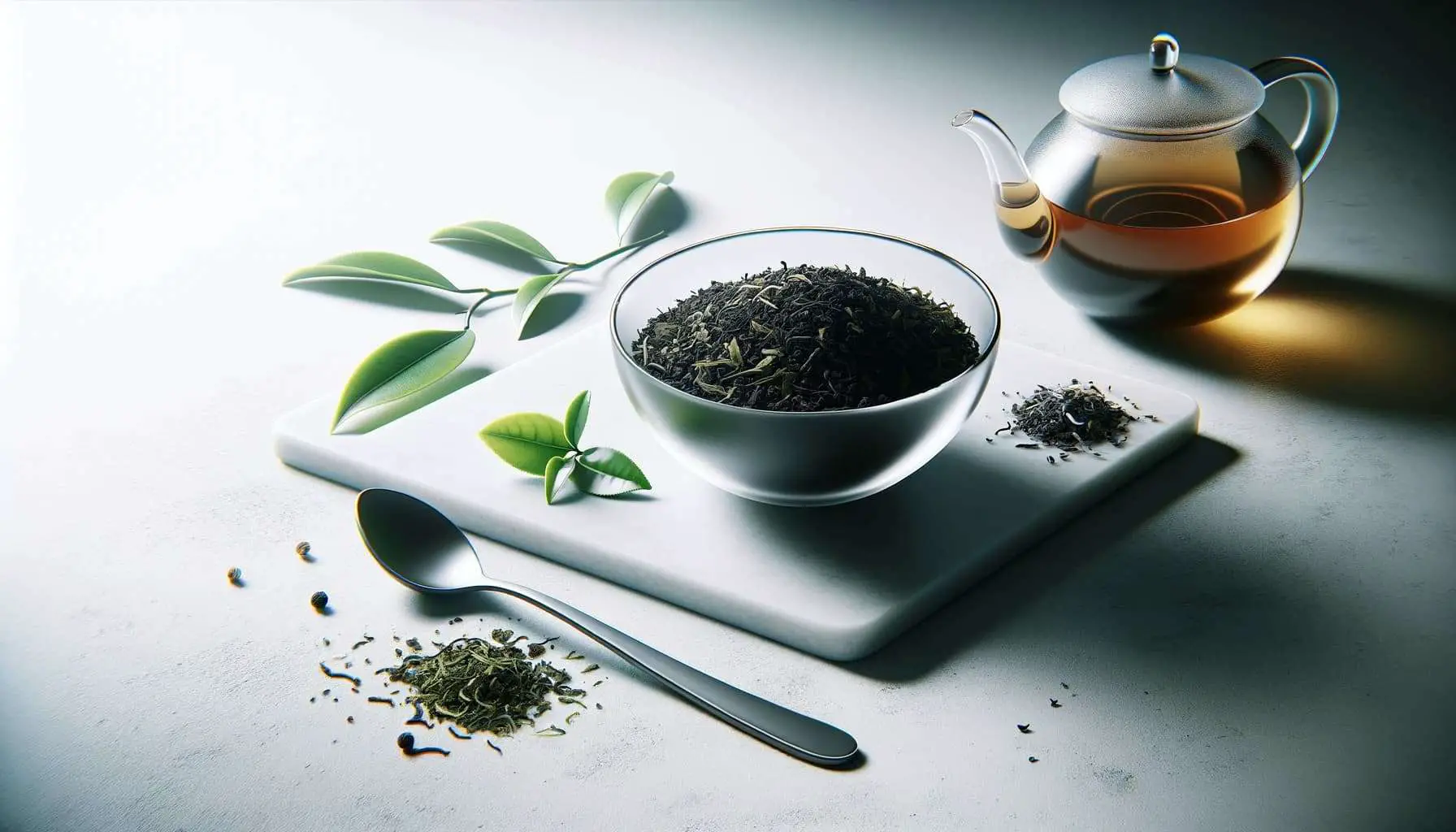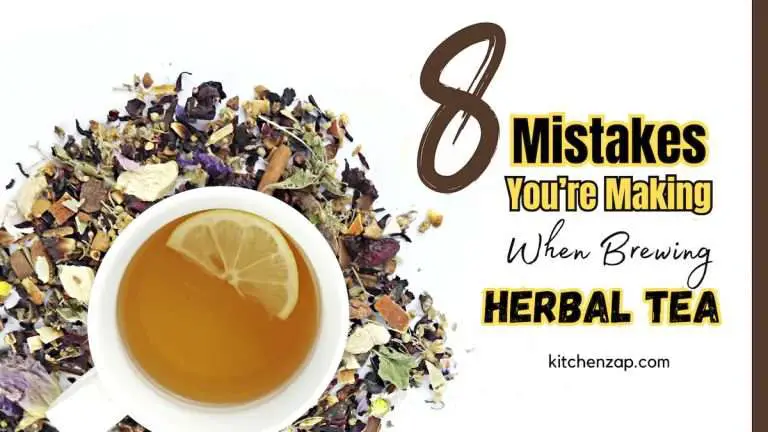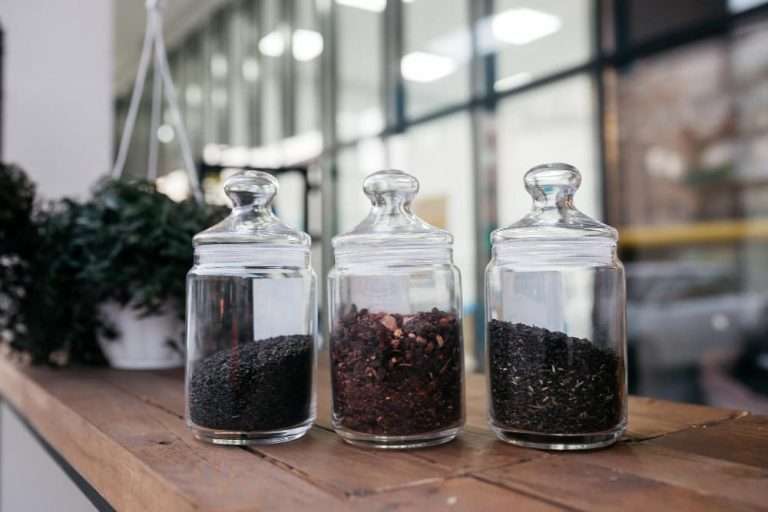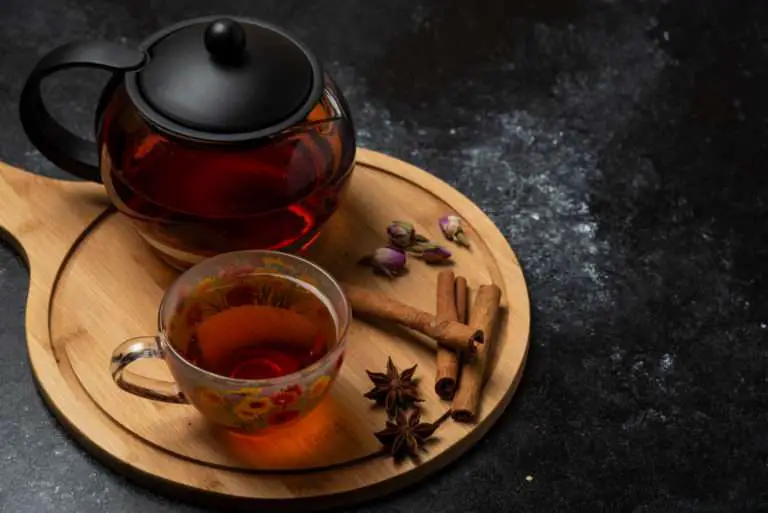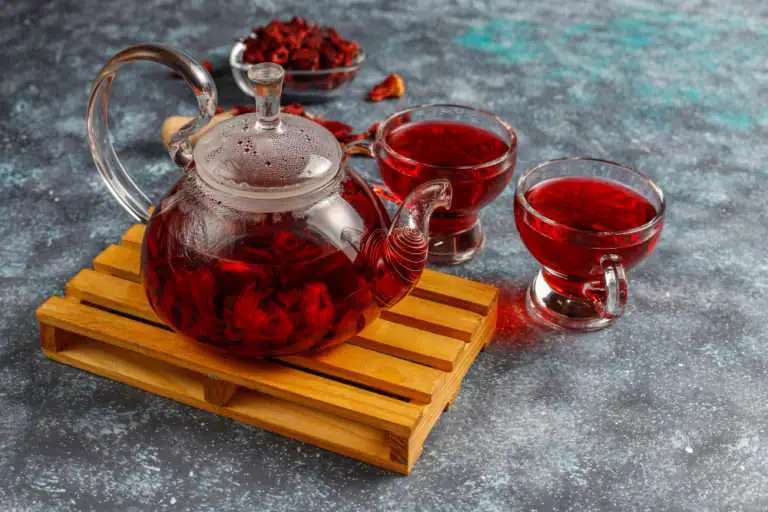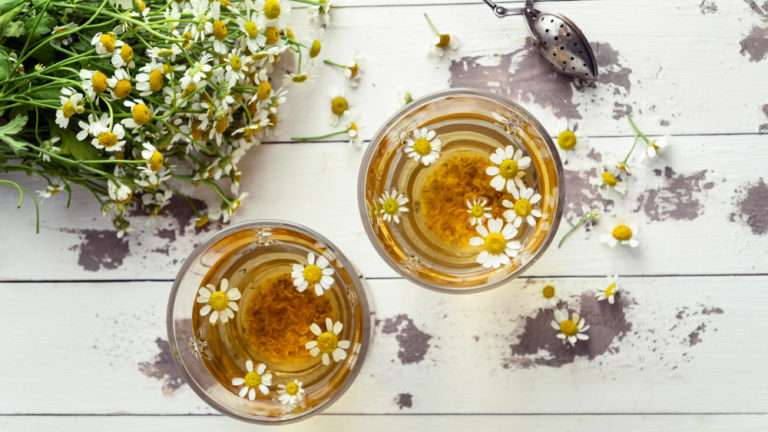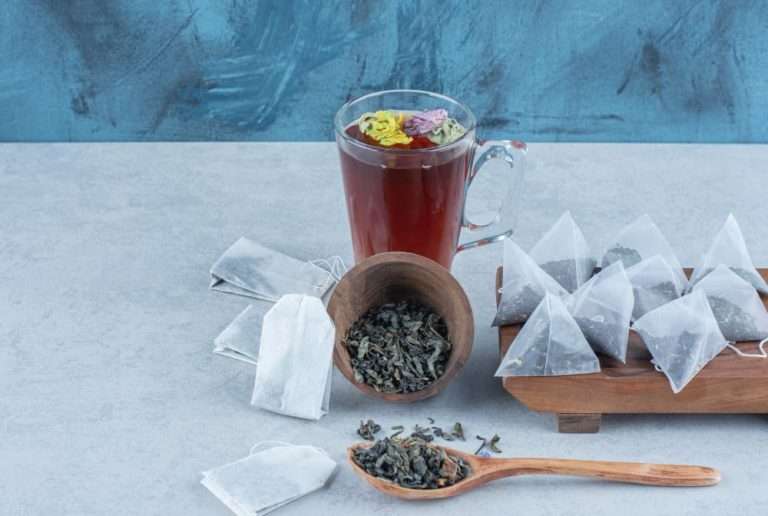Blending Black and Green Teas: How to Create Your Own Signature Blend
Tea blending is becoming increasingly popular as people discover the unique flavors created by mixing different types of tea. One such blend that has been gaining attention is the combination of black and green teas.
Black and green teas originate from the same tea plant but undergo different processing methods. This results in distinct flavor profiles.
When properly blended, the black and green tea mix complements each other to produce a more complex and balanced flavor
The blend also allows you to enjoy the unique health benefits of both black and green teas.
In this article, we will explore the art of blending black and green teas. We’ll learn how to select complementary teas, brew the ideal blend, and even enhance it with herbs and spices.
- What You’ll Get – Healthy Heart Lipton Unsweetened Black Tea flavored with orange pekoe and pekoe cut black tea, 200 tea…
Let’s discover how blending black and green teas can take your tea experience to the next level.
Key Points
- The history and origins of blending black and green teas in Asia.
- An explanation of how green and black teas come from the same tea plant but are processed differently.
- Tips for selecting complementary black and green teas to blend.
- A guide to properly brewing blended black and green teas.
- Recipes for enhancing blended teas with herbs, spices, and other flavors.
- The unique health benefits of drinking a blended black and green tea.
- A comparison of green tea vs black tea flavors.
- Common mistakes to avoid when blending teas.
- How to adjust the blend to create your perfect teacup.
- Inspiration and encouragement to experiment with your own blends.
The Art and Origins of Tea Blending
Tea blending has a long history in Asia. For thousands of years, tea makers have been trying out mixing different tea types. This lets them make more complex and nuanced flavors.
China can be traced to the origin of mixing green and black tea. Tea masters would blend tea leaves to hide flaws or change the color and taste. The method spread across Asia as the tea trade grew.
Today, many classic tea mixes combine green and black teas. Some examples are Masala Chai from India which mixes black tea with spices.
Genmaicha is a Japanese green tea with roasted brown rice. English Breakfast mixes black teas from India and Sri Lanka.
The options are endless when blending green and black teas! Tea blenders use special recipes perfected over generations.
They carefully pick and mix the teas for an ideal flavor, smell, and experience. By studying this history, we can better understand the art of making a balanced tea blend.
Blending lets tea makers go beyond the flavors of one tea. Tea drinkers can discover and savor intricate flavors that are enjoyable and satisfying.
Are Green Tea and Black Tea the Same Plant?
Many people think green tea and black tea come from different plants. But they actually come from the same one.
All true teas originate from the Camellia sinensis plant. This includes black tea, green tea, white tea, oolong tea, and pu-erh tea.
The key difference is how the tea leaves are processed after picking. For black tea, the leaves are crushed and allowed to oxidize or ferment. For green tea, the leaves are quickly steamed or pan-fried to stop oxidation.
So green and black tea start as the same leaf. Different processing gives them their distinct colors, flavors, and health benefits.
The same tea plant creates two very different products. Knowing this helps unlock the magic of crafting the perfect blend.
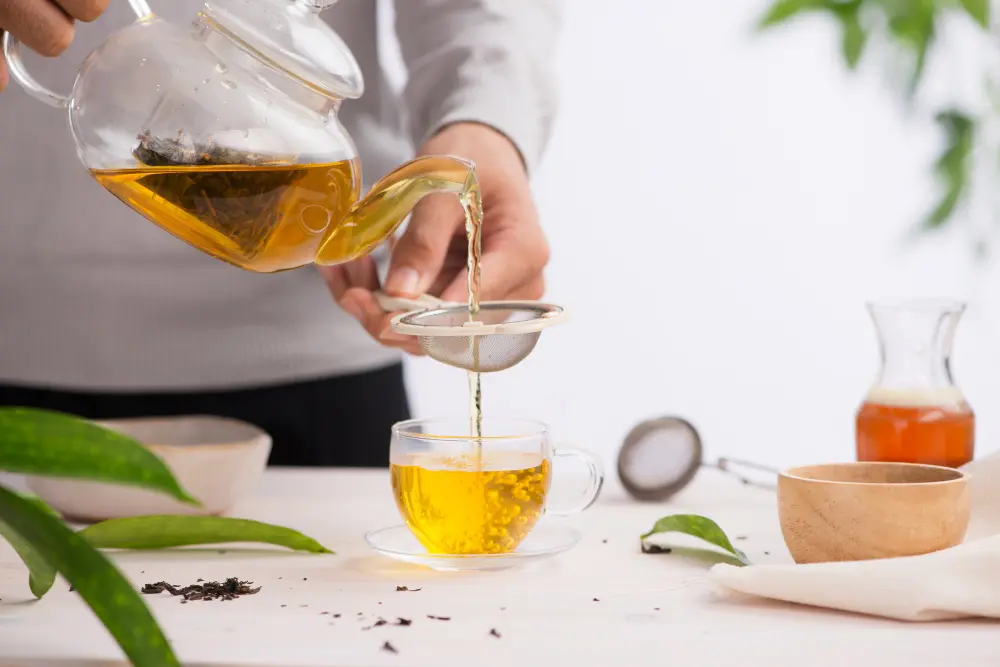
Selecting Complementary Black and Green Teas
Choosing the right green and black teas is key to creating a balanced blended tea. Here are some tips:
- Bold black teas like Assam and Ceylon pair well with bolder green teas like Sencha. The robust flavors complement each other.
- Delicate black teas like Darjeeling go better with lighter greens like Dragonwell. Their subtle flavors won’t overpower each other.
- Smoky Lapsang Souchong black tea adds an interesting dimension blended with grassy Bancha green.
- Nutty black teas like Keemun nicely offset the vegetal taste of Mao Feng green.
- Fruity black teas such as African Bermuda mesh well with sweet Jasmine green tea.
- Breakfast blends or Earl Grey are safe bets for mixing with most green teas.
- ORGANIC GUNPOWDER GREEN TEA – 16oz/453g Resealable Bag (1 Pound); sourced from organic farms in China
Experiment with different ratios to find your perfect blend.
Taste as you go until you achieve the ideal synergy of black and green flavors. Proper tea selection and pairing is integral to crafting a harmonious blended tea.
The table below summarizes the distinctive flavor and aroma characteristics of some popular green and black teas. Use this guide to identify complementary flavors when selecting teas to blend.
For example, the robust maltiness of Assam black tea pairs nicely with the vegetal umami flavor of Sencha green tea.
The citrusy brightness of Ceylon black works well with the chestnut notes of Dragonwell green.
Mix and match teas with similar or contrasting profiles to create your own balanced flavor. Experiment with different combinations using the table as a reference point.
Tea Flavor Profiles
| Tea Type | Flavor Notes | Aroma |
| Sencha green tea | Grassy, vegetal, umami | Fresh, oceanic |
| Gyokuro green tea | Sweet, brothy, savory | Toasty, creamy |
| Dragonwell green tea | Chestnut, savory, toasty | Nutty, velvety |
| Assam black tea | Malty, brisk, bold | Jammy, earthy, rich |
| Ceylon black tea | Citrus, fruity, bright | Zesty, floral |
| Darjeeling black tea | Muscatel, fruity, delicate | Floral, crisp, honeyed |
| Lapsang Souchong black tea | Smoky, woody, intense | Campfire, piney |
| Keemun black tea | Cocoa, stone fruit, smooth | Wine-like, floral |
What Happens If You Mix Green and Black Tea?
Blending green and black tea creates a whole new flavor experience! Each tea contributes its own unique taste, aroma, and character to the blend.
Green teas like Sencha often have grassy, vegetal, or oceanic flavors. Black teas like Assam are more robust, malty, or honey-like. When combined, these flavors meld into something new and more complex.
The aroma also transforms into something more intriguing than tea alone. It will likely have notes from both the green and black tea.
Blending affects caffeine levels too. Green tea generally has less caffeine than black. So a blended tea will have a moderate caffeine level.
The health benefits increase since you get the antioxidants and compounds from both teas.
For example, the combo has EGCG from green tea and theaflavins from black.
Overall, blending green and black tea results in a more balanced, intense, and satisfying cup. The blending brings out the best of both teas
No products found.
Brewing the Ideal Black and Green Tea Blend
Brewing the perfect cup of blended black and green tea requires some skill. Here are some tips:
- Use water between 160-180°F. This is the ideal range for extracting flavors from both tea types.
- Steep the tea for 2-3 minutes. Black tea needs more time than green tea, so this is the perfect midpoint.
- Place the green tea in the infuser first, then add the black tea. This prevents the delicate green tea from over steeping.
- Use about 1 teaspoon of green tea and 2 teaspoons of black tea per 6 oz cup. Adjust to your taste preferences.
- Want to accentuate the green tea flavor? Use a higher quantity of green tea leaves.
- Prefer a stronger black tea taste? Add more black tea to the infuser.
- Experiment with different steeping times and ratios. Taste the blended tea as you go until the flavor balance is right.
With the proper technique, you can brew a perfectly balanced cup of black and green tea blend. Adjusting the blend and brewing to your taste is part of the artistry.
Can You Brew Green and Black Tea Together?
Many people wonder – can you brew green and black tea together? The answer is yes, but there is an art to doing it right.
The key is to start with water between 160-180°F. This temperature range is ideal for extracting flavor from both tea types.
Steep the blended tea for around 2-3 minutes. This gives enough time for the black tea to fully steep without over-steeping the more delicate green tea.
It’s also best to add the green tea to the infuser first, then the black tea. This prevents the green tea leaves from getting overexposed.
- CAFFEINATED BLACK TEA-BAG SAMPLER: Enjoy and explore our delicious black tea assortment; 20 bags each of English…
You can play with the ratios, using more or less of each tea to stress certain flavors. Taste the blended tea periodically to ensure proper extraction.
With the right temperature, steeping time, and order, you can absolutely brew green and black tea together into a perfectly balanced cup.
What Not to Mix with Green Tea
When working with green tea in blends, keep in mind it has a delicate flavor profile. Certain ingredients are typically not recommended as they can overpower or clash with the green tea:
- Dairy – Milk, cream, and other dairy tend to curdle when mixed with green tea’s catechins. Opt for non-dairy milk like almond or oat if adding milkiness.
- Citrus Juices – Acids in citrus speed up bitterness from green tea catechins. Light lemon is okay, but avoid oranges, grapefruit, etc.
- Carbonation – Bubbly drinks introduce air that alters green tea’s flavor. Best to avoid mixing green tea and soda water.
- Strong Herbs – Mint, chamomile, and spices like cinnamon can overwhelm light green tea. Go for more subtle herbs instead.
- Coffee – The bold coffee flavors compete with delicate green tea rather than blending smoothly.
- Alcohol – Green tea’s grassy flavor and aromas get drowned out by alcohol. It also dulls health benefits.
- Sweeteners – Added sugar, honey, and syrups can make green tea overly sweet and mask its flavor subtleties.
Use a light hand when adding any extras to green tea in blends. The goal is to complement, not conceal the natural vegetal flavors.
What Not to Mix with Black Tea
Black tea has a naturally bold, robust flavor profile. Take care when mixing in other ingredients to avoid overpowering the black tea:
- Dairy – Milk and cream can curdle when combined with black tea’s tannins. Non-dairy milk is better if they aim for creaminess.
- Citrus Juices – Acidic citrus juices accentuate bitterness and astringency in black tea. Light lemon is often okay.
- Carbonation – Bubbly drinks introduce air that alters the flavor of black tea. Best to avoid mixing with soda water.
- Strong Herbs & Spices – Peppermint, cinnamon, and chili can easily overwhelm black tea’s nuances. Go light on spices.
- Bitter Juices – The tannins in black tea get accentuated by bitter fruit juices like grapefruit or pomegranate.
- Chocolate – Lower quality chocolate clashes with black tea flavor. High-quality dark chocolate blends better.
- Alcohol – Some black teas work with alcohol, but lower-quality ones can become unpleasantly bitter and astringent.
Use a balanced hand when adding to black tea. Seek to support the natural maltiness rather than overtake it.
Adding Herbs, Spices, and Other Flavors When Blending Black and Green Tea
Adding complementary herbs, spices, and flavors can take your blended green and black tea to the next level. Here are some guidelines:
- Warm spices like cinnamon, ginger, and cardamom nicely complement both green and black teas. Add just a pinch to the tea leaves.
- Mint, lemon verbena, and lemongrass make excellent additions to green and black blends. They brighten up the flavors.
- For floral and fruity flavors, try jasmine, rose, berries, or citrus slices. Lavender and chamomile also work well.
- Apple, peach, and pear slices added to the hot tea infuse a nice subtle fruitiness.
Here are two tasty blended tea recipes to try:
- Maple Spiced Black and Green Tea – Add a cinnamon stick, cloves, and maple syrup to the tea as it steeps.
- Blueberry Green and Black Tea – Muddle a few fresh blueberries with the tea leaves before steeping.
Let your imagination run wild when concocting flavored blended black and green teas! The possibilities are endless.
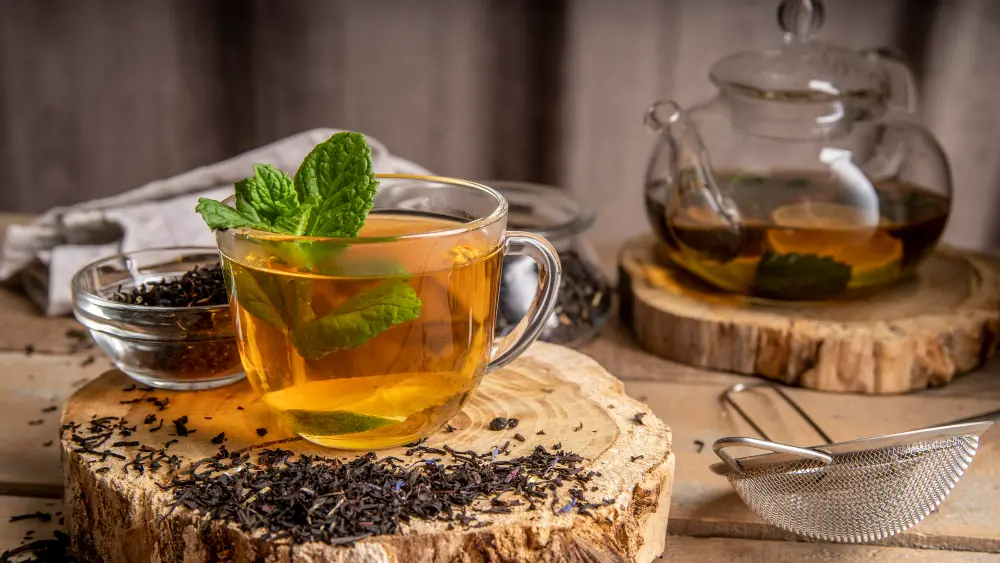
Health Benefits of Blending Teas
Black and green teas pack some impressive health benefits. Green tea contains powerful antioxidants called EGCG that may help fight disease. Black tea has theaflavins and thearubigins that also act as antioxidants.
When you blend black and green teas, you get the benefits of both! There is some evidence showing that blending the two can have additive antioxidant effects.
For example, one study found that mixed black and green tea retained the same antioxidant capacity as pure green tea, but with the added benefit of black tea antioxidants. More research is still needed though.
Blending green and black tea also allows you to customize the health effects. Want more energy? Add more black tea to the blend.
Seeking relaxation? Increase the green tea ratio.
No matter what you aim for, a well-crafted blend of black and green teas will almost certainly pack more nutritional value than a single tea alone. Drinking this powerful combo is a tasty way to do something good for your body
Which tastes better, Green Tea or Black Tea?
- Green teas often have these flavors:
- Vegetal
- Grassy
- Seaweed-like
- Delicate
- Lightly astringent
- Black teas tend to have these flavors:
- Malty
- Robust
- Fruity
- Smoky
- Brisk mouthfeel
Whether you prefer green or black tea depends on your personal taste. Some people like the mild taste of green tea, while others prefer the strong taste of black tea.
You can create your perfect cup by blending different ratios of black and green tea. Black tea adds full flavor and body, while green tea contributes delicate notes. Experiment to determine if you prefer green, black, or a balanced blend.
Common Blending Mistakes to Avoid
It’s easy to mess up blending black and green teas if you aren’t careful. Avoid these common pitfalls:
- Using low-quality or non-complementary teas. Carefully pick teas that enhance each other. Don’t skimp on stale, cheap tea bags.
- Improper storage leads to stale teas. Keep teas in a cool, dark place in airtight containers. Don’t store near strong spices or odors.
- Not adjusting brewing to account for multiple teas. Follow proper techniques like water temp and steep times.
- Overstepping the delicate green tea. Add green tea to the infuser first and taste frequently to prevent bitterness.
- Using imbalanced ratios. Don’t add too much of one tea; equal parts is a good starting point.
- Trying to blend too many types of teas. Stick to 2 or 3 complementary teas.
- Not taste as you blend. Frequently sample to achieve optimal flavor.
With some care and practice, you can master the art of blending black and green tea. Learn from any mistakes to become a tea blending expert.
Conclusion
Blending black and green tea is a fun and flavorful craft. When done right, combining these two teas creates a balanced and complex taste that highlights the best qualities of each.
We’ve explored the origins of tea blending, how to select complementary teas, brewing tips, health benefits, and mistakes to avoid. With this knowledge, you can start crafting your own artful black and green tea blends.
Experiment with different varieties and ratios to find your favorite mix. Add spices, herbs, or fruit to concoct your signature blend. Adjust the brewing to accentuate the delicate green notes or bold black flavors. Make it your own.
Blending tea is both art and science – it takes skill, but don’t be afraid to follow your creative instincts too.
Sip mindfully and let your taste buds be your guide. The combinations are endless for crafting a perfectly balanced cup.
Now that you know the joys of artfully blending green and black tea, unleash your inner tea master! Bring new flavors and health benefits into your cup. Brew, blend and savor this aromatic harmony.

